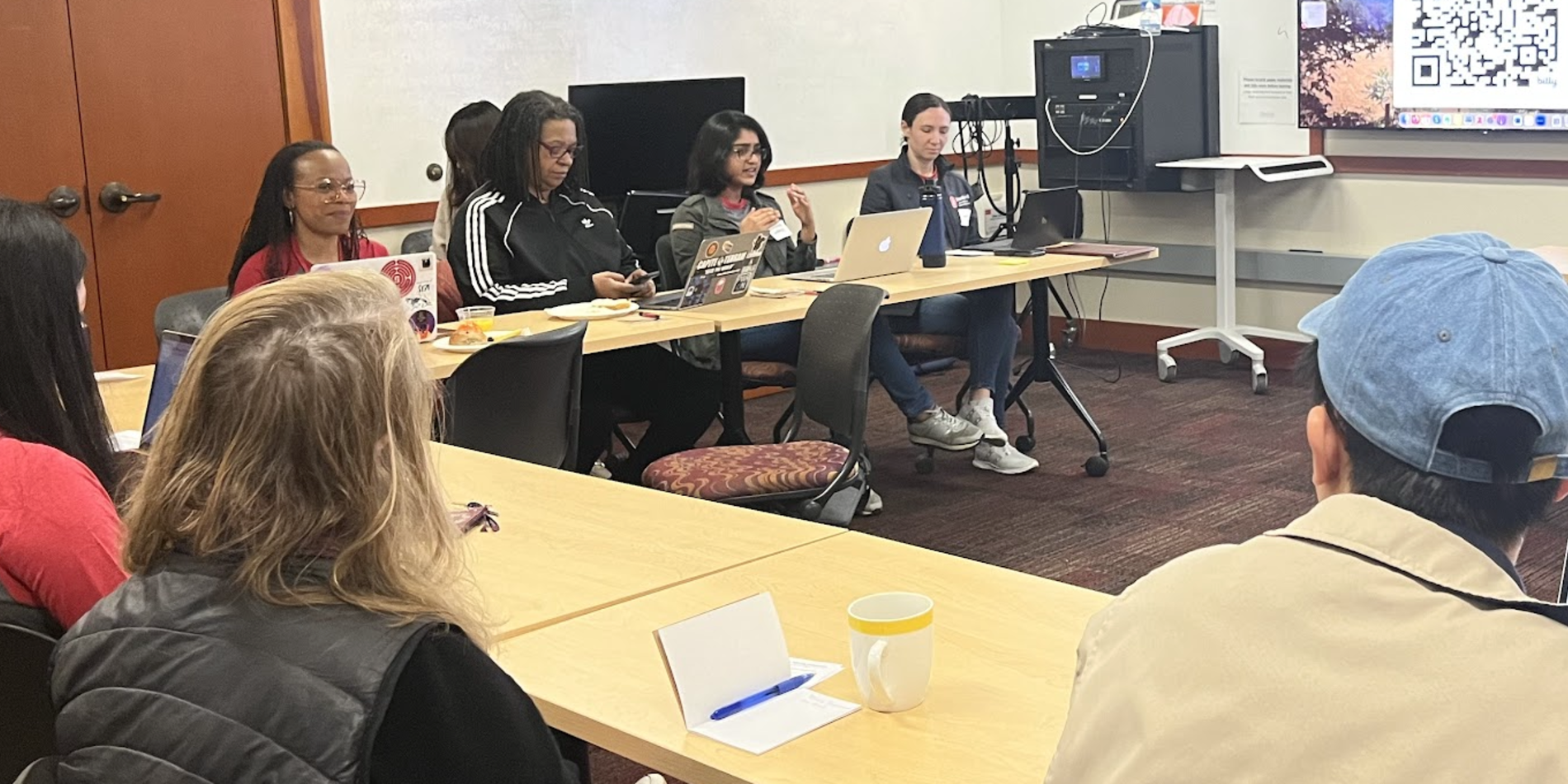By Tessa Brown
My notes from my interview with Gigi Otálvaro-Hormillosa begin with her words, “A few things...” Small and unassuming, yet leading in a thousand directions. As Gigi expounded on these “few things,” I was soon astonished by the span of her scholarly, curatorial, and pedagogical projects and their bold range across themes of feminism, labor, sex work, race, meditation, visual art, writing and rhetoric, and performance studies.
As a former doctoral student in Stanford’s department of Theater and Performance Studies, Gigi’s dissertation work was an ethnographic and historiographic study of exotic dancers in San Francisco from the 1960s-2010s, many of whom were queer, trans, and/or of color. The study begins in the 1960s, when “topless entertainment became legal in San Francisco, although cross-dressing continued to be criminalized.” Engaging debates on “victimization versus empowerment” in second wave feminism’s attention to sex work, Gigi expands those debates with her local focus on queer and trans performers of color whose identities and agency were often overlooked in what were known as the “sex wars” of the 1980s and later reconsiderations. “Using diverse methods including ethnography, visual and performance analysis, historiography,” Gigi writes in her abstract, “I relate these phenomena through archival materials, artworks, and original interviews I conducted with three generations of women who have performed in San Francisco’s industry since the 1960s.”
While the dissertation, Erotic Resistance: Performance, Art, and Activism in San Francisco Strip Clubs, 1960s-2010s, is available through Stanford University Libraries for affiliates, Gigi also has an article, “Metamorphic and Sensuous Brown Bodies: Queer Latina/x Visual and Performance Cultures in San Francisco Strip Clubs, 1960s–1970s,” forthcoming in April in the second issue of a new journal, Latin American Latinx Visual Culture.
On campus, Gigi is working on a new pedagogical and curatorial project through the Queer Resource Center. As the curator and lead instructor of the performance-making component of their Queer Arts Initiative, Gigi has invited four guest artists to campus, including longtime Bay Area performance artist and AIDS activist Keith Hennessy; award-winning Colombian writer, historian, and performance artist Juliana Delgado; internationally renowned movement-based performance artist, boychild; and Vixen Noir, formerly known as Veronica Combs, whom she described as “an important force in the queer of color performance scene” in the 90s and 2000s when she established liquidFIRE Productions. Scheduled for Spring 2019, this nine week workshop will feature artist talks and workshops for students led by the guest artists and sessions taught by Gigi that will incorporate mindfulness and a variety of themes related to queer performance. The series is co-sponsored by TAPS, IDA, and Black and Queer at Stanford. (More info will is available on the Queer Resource Center’s website.)
Gigi has also written for Bay Area publications such as Art Practical and SFMOMA’s publication, Open Space. Last year she published on the artwork of Julie Tolentino as well as Dorian Katz, a Stanford MFA alum whose work addresses themes concerning fantasy, feminism, pornography, and erotica. This spring Gigi covered the Stanford Art Gallery’s exhibition of the work of Michael Richards for Art Practical. Richards, an African American artist who was killed at 38 years old while working in his studio on the 92nd floor of the Twin Towers on 9/11, used his body as casts for work that engaged themes of “civil rights, lynching, minstrelsy, and police brutality” as well as “racial uplift and downfall.” Gigi told me she plans to frame his work in relation to these themes, while focusing on the performative engagements of his sculptural works.
Besides her writing and curation, of course, Gigi is also teaching in PWR! She brings her commitments to intersectional performance pedagogy to her innovative freshman writing and rhetoric course, “Art, Writing, and Performance: The Rhetoric of Visual Analysis.” For Gigi, this course is an opportunity to talk to her students about “art and activism, queer art, Latinx art and Latin American visual politics.” She credits our colleague Donna Hunter with introducing her to African America artist and recent MacArthur Genius Titus Kaphar’s TED talk, “Can Art Amend History” as “such a great example of visual rhetoric and its ability to revise art history.”
In the writing and rhetoric classroom, Gigi’s grounding in theater and performance studies as well as visual art enters the classroom through the issues she invites her students to engage with as well as her embodied practices of teaching and the embodied writing practices she offers. Teaching becomes a curatorial practice, as she draws attention to artists of color, and a performative practice, as she shares the methods of mindfulness and meditation she uses for her own writing with her students as well. She credits her own creative writing teacher, former TAPS professor, Cherrie Moraga, for the practice of meditating before writing. Always contextualizing and creating resistive genealogies, Gigi also puts what we today call “mindfulness” in a Buddhist history of meditation—so her students “don’t think mindfulness came from an app!” She continues on a more somber note: “It’s important to teach them about Asian American history and that Buddhist inspired meditation was not always popular,” she says. During Japanese internment, she told me, enforcement would “look for Buddhist symbols in the homes they were raiding.”
“It’s really nice to sit in a circle with students who are just being quiet and still for a couple minutes,” she said of meditation, remarking that “I like to do a combination of still and walking meditation because sitting doesn’t necessarily work for everyone.” She also brings in theater games, art writing, and performance, creating a community for “thinking about how performance is rhetoric and rhetoric is performance.”
“By the time they arrive at their final projects,” Gigi tells me, “I feel good about their progress. Last quarter I was so proud of what the students produced. It was incredibly rewarding to see how courageous and articulate they became in taking on tough issues within and beyond the art world. And this quarter’s classes are doing equally inspiring work!"



